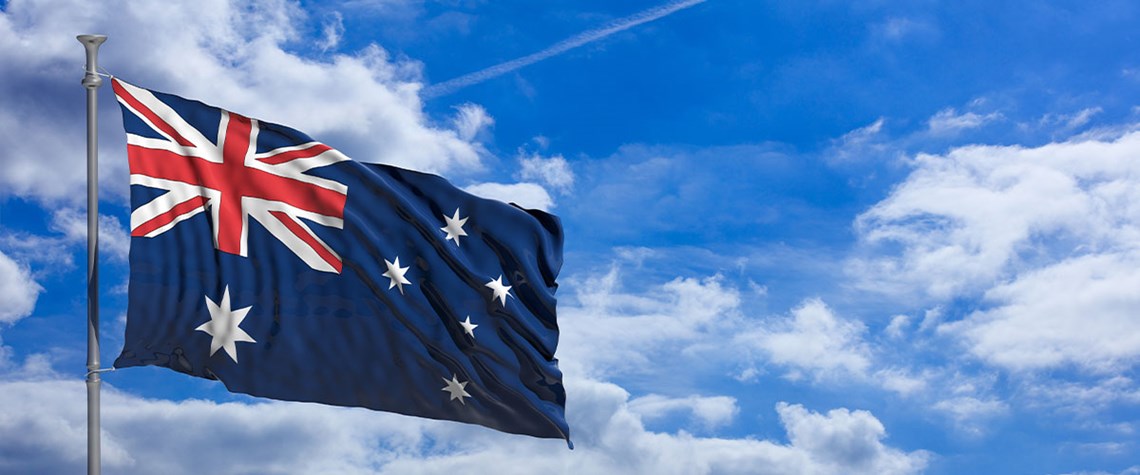Australia has 13 low-carbon hydrogen projects of more than 1GW in size, with a potential production capacity of c.8.4mn t/yr, according to data from government agency the Commonwealth Scientific and Industrial Research Organisation.
When including smaller developments, publicly announced projects are targeting c.9mn t/yr—although only 1.5mn t/yr of this is likely to be online before 2030. However, this would still represent a massive increase in hydrogen production in Australia: current consumption is around 650,000t/yr and comes almost entirely from unabated fossil fuels.
Project sizes are increasing rapidly, albeit from a low base. Last month, local player Viva Energy ordered an alkaline electrolyser with a capacity of 2.5MW—more than twice the size of any other operational green hydrogen project in Australia—from Norwegian manufacturer Nel for a refuelling station in Geelong Bay.
Three different 10MW electrolyser projects received a combined A$100mn ($70mn) from the government’s Australian Renewable Energy Agency in 2021. One is a green ammonia collaboration between utility Engie and fertiliser producer Yara in Pilbara, Western Australia (WA). The other two are gas-blending projects—at Canadian firm Atco’s clean energy innovation hub in Jandakot, WA, and at Australian Gas Networks’ Hydrogen Park Murray Valley in Wodonga, Victoria.
They had all been targeting startup in 2023, but FIDs have not yet been taken and they are now likely to come online in 2024. Covid's effect on workforce and supply chains is a key contributing factor to the delays, according to Fiona Simon, CEO of industry body the Australian Hydrogen Council.
“It is very hard to gauge how many of these projects will reach FID, not least because so much more government support will be needed,” she says.
FIDs for the larger projects, such as BP’s Asian Renewable Energy Hub (AREH) and green hydrogen developer Intercontinental’s Western Green Energy Hub (WGEH), with planned hydrogen production of 1.6mn t/yr and 3mn t/yr respectively, remain some time off. BP hopes to reach FID on AREH in 2025, and Intercontinental on WGEH in 2028. These projects will scale up in phases, so the headline production figures are unlikely to be seen until deep into the 2030s. Still, the first phases will be significant, together producing c.500,000t/yr in the early 2030s.
Growth area
Projects in the 10MW-1GW range are where initial growth is expected, with Simon expecting a quick jump from current levels to the 100MW range.
“That is certainly what the electrolyser manufacturers are preparing for,” she says.
One project in this range is commodity trader Trafigura’s 440MW Port Pirie project—targeted for FID early next year. Halfway through Feed studies, the first phase now looks likely to have a capacity of 150-200MW—up from the 85MW initially planned.
To proceed to the next stage, Port Pirie “will require support from all stakeholders, federal and state government, debt financiers, green power producers and technological providers”, Trafigura says.
The Trafigura project is one of many at a similar scale and stage. Australian firms such as Origin Energy, Woodside, and Fortescue Future Industries are targeting FIDs on multiple projects over the next two years.
New government
Projects targeting a larger scale than this are unlikely to receive to FID without significant government support.
“This is very understandable when we do not have the climate or economic policies to make them commercial,” says Simon. “We are still figuring out business models.”
To obtain financing for projects, developers need to show they have secured offtake, which will require policy support to incentivise offtakers to pay a premium for low-carbon forms of hydrogen.
Some sort of tax or incentive to spur carbon reductions from industry will be essential, according to Simon.
“The main issue projects face is they do not have a demand case. People are reluctant to be a first mover for now when fossil fuels are cheaper and have infrastructure. This means hydrogen will be a long-term play, and you need government policy to make it happen,” she says.
On the production side, support via a contract for difference (CfD) system would be preferable to subsidies, Simon argues, as the goal is to have something approaching a market.
The need for support is not specific to Australia—the EU and the UK are both evaluating CfD schemes, and a key component in Shell’s recent FID on a 200MW project in the Netherlands was the awarding of a significant EU grant.
Hydrogen has bipartisan support in Australia. The previous government, which was hesitant to talk about climate change, still gave funding of around A$1.5bn for hydrogen, framing it as an economic opportunity to preserve Australia’s position as a major energy exporter.
The incoming Labor government last week laid out initial basic plans to support the sector and is legislating to reduce emissions, which bodes well for hydrogen.
Simon notes that, as projects scale up, government support must do likewise. “Many billions more will be needed,” she says.
Energy everywhere all at once
Another challenge on the horizon for the industry is a glut of projects chasing the same equipment and workforce.
Good planning will be essential to avoid bottlenecks, as projects will begin to demand a huge quantity of wind turbines, solar panels and electrolysers. The largest proposed project involves 50GW of renewable generation capacity—more than the current total installed wind and solar capacity in Australia. Finding enough skilled workers to install such capacity will be challenging, particularly if Australia remains close to full employment.
In the future, Simon expects a lively debate on additionality and the trade-offs between direct electrification, the displacement of existing grey hydrogen and the use of hydrogen in transport.
“There are so many use cases that these discussions will be inevitable,” she says.








Comments